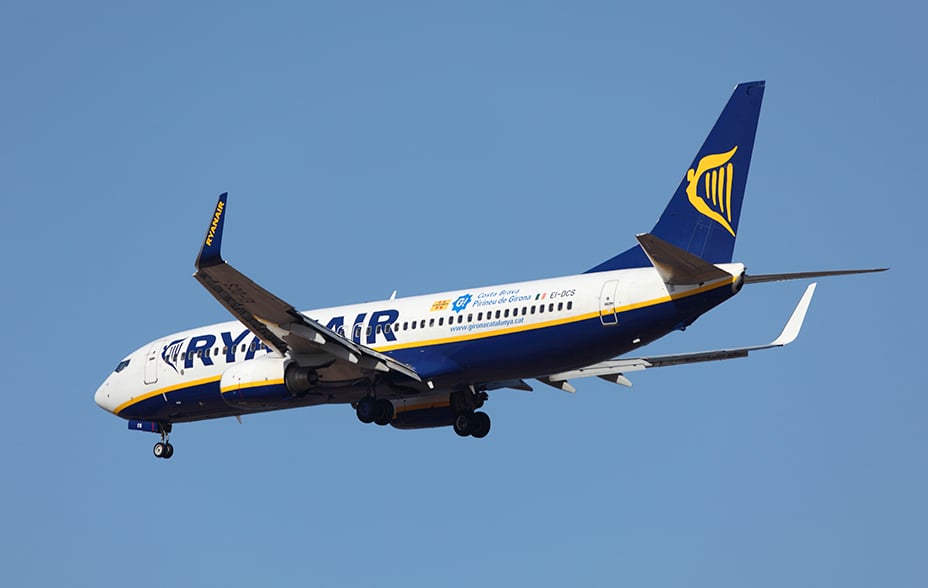
Investors should carefully consider the objectives, risks, charges and expenses of the Fund before investing. This information and other information about the Fund can be found in the prospectus and summary prospectus. For a prospectus or summary prospectus please visit our website at https://usmutualfund.bailliegifford.com. Please carefully read the Fund’s prospectus and related documents before investing. Securities are offered through Baillie Gifford Funds Services LLC, an affiliate of Baillie Gifford Overseas Limited and a member of FINRA.
Dogfights in the skies above Korea taught John Boyd the importance of ‘orientation’. That was the word the military pilot-turned-strategist used to describe assessing and contextualising a crisis in order to react quickly.
Two decades later, working at the Pentagon, Boyd proposed that it was the all-round visibility afforded by the bubble canopies of US F-86 jets, as much as the planes’ manoeuvrability, that gave US pilots an orientation edge over the more powerful MiG-15s of the North Koreans and Chinese. That insight influenced not just his strategic thinking, but wider ideas about business culture and resilience in a crisis.
Baillie Gifford’s International Alpha Team picks companies for our clients' portfolios that we believe share that same 360-degree vision. It is not enemy action that challenges businesses on all sides, but issues such as competition and technological change. Boyd’s ideas, which he schematised into the ‘OODA Loop’ (observe-orientate-decide-act), help us to think about how well organisations and individuals thrive in uncertainty. That, in turn, enables us to spot the companies that have the right culture to be resilient.
John Boyd's ‘OODA Loop’ framework
But hang on. Aren’t discussions about business culture better suited to bull markets than to periods of poor investment performance? Indeed, the word ‘culture’ is enough to conjure up unhelpful notions of staff perks or vacuous value statements. For us, however, examining a company’s culture can tell us whether it will merely survive in the face of adversity, or can thrive by turning challenges into opportunities.
Beyond the balance sheet
Probing companies’ balance sheets to explore their sensitivities to higher interest rates and assess their ability to generate free cashflow only takes us so far. Knowing that approximately 95 per cent of the portfolio is cashflow positive is important, but metrics alone won’t tell us enough about their prospects. There’s more to analysis than spreadsheets, regardless of market conditions.
That’s because resilience is not just about hunkering down until the storm blows over. It is about adaptation to threatening change – or so the American Psychological Association defines it. True resilience is a positive force that turns challenges into opportunities. That ability is shared by what we call ‘quality compounders’ – those businesses that can deliver steady and repeatable growth. We created this portfolio category in the belief that the resilience that allows companies to compound earnings is undervalued by the market. It is shown by companies such as stock exchange operator Deutsche Börse and luxury goods conglomerate Richemont. Culture also counts for another of our categories, ‘through-cycle winners’ – companies competitive enough to take market share even in downturns in the cycle – for example low-cost airline Ryanair.

© iStockphoto.com/Philip Lange
How organisations process information and make decisions demonstrates their culture. Companies take information from customers, suppliers, regulators, and other sources, orient themselves according to that information, and then allocate resources – including your capital – based on their conclusions.
But all too often, processing that information is based on a company’s rulebook, which tells employees, “When X happens, do Y”. Such rules don’t promote resilience because they aren’t good at adapting to change. Companies that rely excessively on rulebooks are fragile.
From culture to orientation
This is where culture comes into play. It determines how employees make decisions when their rulebooks run out.
The aforementioned John Boyd, trained in the chaos of war, saw it in these terms. When the environment is dynamic or chaotic and the inputs noisy, a culture that efficiently processes information is key to resilience. Businesses are currently going through one of these periods.
Boyd revolutionised US military strategy in the 1980s by returning to concepts such as adaptability, agility, and morals, which he believed lost by the Cold War military-industrial complex. “Machines don’t fight wars, people do – and they use their minds,” he wrote. Culture matters and Boyd made the link to resilience. His OODA Loop, referred to above, describes the advantage that superior information processing power can bring.
Those glass cockpit canopies allowed Boyd and his fellow pilots to observe and orientate themselves in dogfights. Anyone can ‘act’ decisively, but Boyd emphasised the importance of the ability to perceive a situation quickly and accurately. We look for companies with those same qualities.
From theory to practice
Sony is a good example of the power of orientation. In 1946, founders Masaru Ibuka and Akio Morita chose an industry-agnostic name for their electronics company to give it the freedom to adapt without constraints in the future. Today, two-thirds of the company’s profits come from content such as films, games, and music, rather than electronics. Fellow Japanese business Nidec saw the decline of hard disk drives and re-orientated its electrical motor expertise towards automotive markets.

© Imaginechina/REX/Shutterstock
Boyd would ascribe these companies’ orientation skills as indicative of culture. He believed a sense of shared purpose allows for individual initiative while maintaining group harmony. It prevents an organisation being shaken apart by the external environment.
Lots of organisations have built themselves on loosely-coupled but highly-aligned structural foundations – that blend of individual initiative within group harmony – which are prefigured in Boyd’s work. Those same cultural ideas run the entire length of the International Alpha portfolio, from Abcellera to WuXi Biologics.
Observation comes first in Boyd’s ‘loop’, and culture determines how well a company can do it. While nearly every company will claim to listen to its customers, businesses can become so bureaucratic and overwhelmed by internal politics that they lose the ability to orientate themselves in new circumstances. The main competitive advantage enjoyed by Japan’s Keyence, which provides factory automation equipment, is its technical sales force. Through a combination of hard work, the right incentives, and – most importantly – a culture that values them, these salespeople can get inside their customers’ heads and stay one step ahead of what they need.
Beyond rulebooks
Culture also drives prioritisation, allowing companies to defy their rulebooks. Ecommerce platform builder Shopify swept aside its normal processes to build the tools that became life support for many small businesses in lockdowns. Three months into the pandemic, Shopify’s clients had replaced 95 per cent of lost offline revenue thanks to online sales. It was Shopify’s culture that allowed it to execute and ‘thrive not survive’ in the most testing of circumstances. Gross merchandise volume sold through websites powered by its platform rose from $61bn in 2019 to $197bn in 2022.
Time and again, management teams tell us that Baillie Gifford is the only investment manager to ask them about their company culture and how it influences decisions. That might be due to time frames; culture only matters if you’re going to hold shares for long-term growth. It could also be due to doubts over determining internal culture from the outside. Yet, we believe the decisions that companies make offer an insight into how they process information. We may not see each company demonstrate its OODA loop thinking day-to-day, but we see how it affects its big decisions and can question its decision makers.
Amid uncertainty, companies are taking their own decisions when the normal rules no longer apply, revealing their underlying culture as they do so. They are orientating themselves to change. Nidec’s restructuring plans reveal a culture that is atypical for Japan. Hearing the management team of Canada’s Ritchie Bros. Auctioneers unconvincing justification of its $7.3bn acquisition of IAA suggested its culture is no longer as customer-centric, so we sold the portfolio holding. Watching Adyen hire 25 per cent more software engineers while peers shed them tells us a lot about how the Dutch payments platform differentiates itself through long-termism.
It is a small step from long-term thinking to clear competitive advantage. No business has demonstrated that so clearly as Ryanair. Over the course of the pandemic, its culture of competitive aggression and cost-consciousness saw it increase passenger numbers by 20 per cent and take significant market share.
Companies that out-adapt their peers in a rapidly changing world will thrive because adaptation gives them resilience that delivers competitive advantage. Boyd identified orientation as the cornerstone of that adaptive process. What counts is quickly and effectively observing a dynamic environment and orientating yourself within it. At the heart of orientation sits the kind of culture that allows the right external information to be received and the right way to efficiently process it.
Culture counts in any market, more so in changing ones. If other investment managers appear to ignore culture, that creates opportunities for us to deliver superior returns on your capital.
Important information and risk factors
This content contains information on investments which does not constitute independent research. Accordingly, it is not subject to the protections afforded to independent research and Baillie Gifford and its staff may have dealt in the investments concerned.
As with all mutual funds, the value of an investment in the fund could decline, so you could lose money.
The most significant risks of an investment in the Baillie Gifford International Alpha Fund are Investment Style Risk, Growth Stock Risk, Long-Term Investment Strategy Risk and Non-U.S. Investment Risk. The Fund is managed on a bottom up basis and stock selection is likely to be the main driver of investment returns. Returns are unlikely to track the movements of the benchmark. The prices of growth stocks can be based largely on expectations of future earnings and can decline significantly in reaction to negative news. The Fund is managed on a long-term outlook, meaning that the Fund managers look for investments that they think will make returns over a number of years, rather than over shorter time periods. Non-U.S. securities are subject to additional risks, including less liquidity, increased volatility, less transparency, withholding or other taxes and increased vulnerability to adverse changes in local and global economic conditions. There can be less regulation and possible fluctuation in value due to adverse political conditions. Other Fund risks include: Asia Risk, China Risk, Conflicts of Interest Risk, Currency Risk, Emerging Markets Risk, Equity Securities Risk, Environmental, Social and Governance Risk, Focused Investment Risk, Geographic Focus Risk, Government and Regulatory Risk, Information Technology Risk, Initial Public Offering Risk, Japan Risk, Large-Capitialization Securities Risk, Liquidity Risk, Market Disruption and Geopolitical Risk, Market Risk, Service Provider Risk, Settlement Risk, Small-and Medium-Capitalization Securities Risk and Valuation Risk.
For more information about these and other risks of an investment in the fund, see “Principal Investment Risks” and “Additional Investment Strategies” in the prospectus. The Baillie Gifford International Alpha Fund seeks capital appreciation. There can be no assurance, however, that the fund will achieve its investment objective.
The fund is distributed by Baillie Gifford Funds Services LLC. Baillie Gifford Funds Services LLC is registered as a broker-dealer with the SEC, a member of FINRA and is an affiliate of Baillie Gifford Overseas Limited.
All information is sourced from Baillie Gifford & Co and is current unless otherwise stated.
The images used in this article are for illustrative purposes only.
| Holdings | Fund % | |
| 1. |
MercadoLibre |
4.29 |
| 2. | TSMC | 3.11 |
| 3. | AIA | 2.82 |
| 4. | CRH | 2.65 |
| 5. | Samsung Electronics | 2.64 |
| 6. | Ryanair | 2.58 |
| 7. | SAP | 2.54 |
| 8. | Richemont | 2.23 |
| 9. | Adyen | 2.19 |
| 10. | Nestlé | 2.18 |
It should not be assumed that recommendations/transactions made in the future will be profitable or will equal performance of the securities mentioned. A full list of holdings is available on request. The composition of the fund's holdings is subject to change. Percentages are based on securities at market value.
Ref: 57646 10031898





